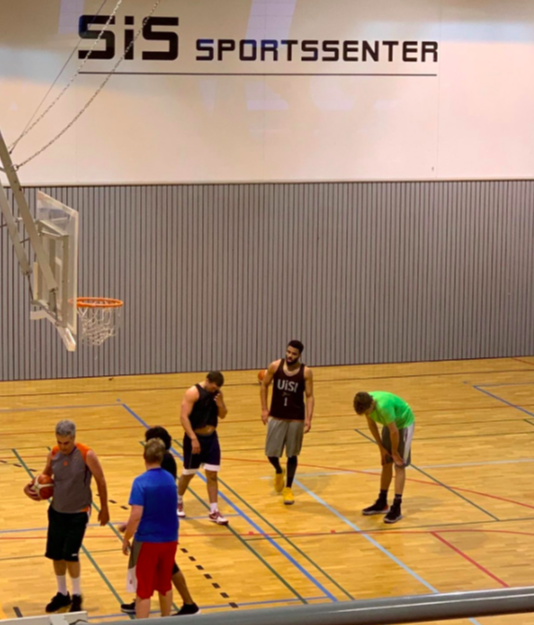Last month, from May 20-23, I had the honor of leading an intense four day workshop on Disciplined Entrepreneurship for about 80 participants who were either entrepreneurs, aspiring entrepreneurs or entrepreneurship amplifiers (i.e., educators, people running incubators/accelerators, government agencies supporting entrepreneurship). This is my third year doing it and I really enjoy it for many reasons.
This year, the program was hosted at the University of Stavanger and specifically Professor Jan Frick and Egil Svela in collaboration with the Southwest Norway REAP Team. The first year I did a similar mini-course in Alesund and last summer it was in Kristiansand. Each year the host city has essentially doubled in population size. Next summer, Bergen is the planned host, which will be yet another doubling in size. I feel like I am really getting to know Norway and Norwegians.
Each year brings new insights and this year was no different. Here are my top takeaways the Stavanger workshop and associated discussions:
- Viking Spirit Lives On: Despite an economy that is booming in large part from the oil industry off its shores, Norwegians still possess the historical Viking spirit. Some participants indicated that they preferred I use a Viking reference as opposed to our common “pirate” references. While clearly selection bias was in play with the people I was meeting, it was impressive how many of the participants wanted more than the comfortable life, which is so prevalent in Norway. They were seeking a challenge. For many of them the challenge was climate change but there were many other as well. Innovation-driven Enterprise (IDE) entrepreneurship was welcomed with open arms.
- Well Educated and Collaborative Talent Pool: The human talent pool for entrepreneurship is quite strong in two important dimensions. They are very well educated and they are very collaborative.
- Stable Government and Society: Another factor that helps support entrepreneurship that Norway takes for granted is a stable government and society. As we see in so many other places, disruption at either of these levels makes long term planning and investment more risky, and Norway is at an advantage here.
- Multi-Stakeholder Model to Support Entrepreneurship: Through the MIT REAP program, Norway has gotten the coordinated involvement of universities, government, risk capital, corporations and the entrepreneurial community to support the development of a more robust innovation-driven entrepreneurial ecosystem. This makes for a much more efficient execution of any program and integration across the portfolio of implemented programs.
- Bottoms Up Law Still Rules: Even with such models, it is incredibly important to not get de-focused. In Western societies, entrepreneurship is driven “bottoms up”. That means that the engine that will propel advancement is the entrepreneurs themselves. I have not yet seen a successful model to drive entrepreneurship from “tops down” as all the four other stakeholders can do is help facilitate.
- The Single Necessary and Sufficient Condition for an Entrepreneurial Ecosystem: For a business, the single necessary and sufficient condition for a business is a paying customer. I start all of my classes with this so that students never lose the focus on the ultimate goal. Likewise, to have an entrepreneurial ecosystem, the single necessary and sufficient condition is entrepreneurs. The more entrepreneurs the better but you can also improve and ecosystem by making them higher quality and connecting them together to increase their productivity. That should be the unambiguous goal of any program to build an entrepreneurial ecosystem. Often efforts lose this focus.
- Kudos to Norway In this Regard: Learning from others, most specifically their Scottish friends, the Norwegians have implemented a plan to allocate resources and focus on the entrepreneurs. The Summer Scale School brings aspiring entrepreneurs together and invests in their training in a “hands-on” manner. It also builds a common language that will foster community that gives each entrepreneur a force-multiplier support structure. They are also doing this with a sustained (as opposed to a one time) investment. In basketball there is a saying “good things take a long time and mostly bad things happen quickly.” Much like Scotland, I am highly confident that with the other assets mentioned above, Norway will see success in the long term. I really believe in this multi-year grass roots programs as the fundamental component of creating sustainable innovation-driven entrepreneurial ecosystem. Regions often become mesmerized by recent events, new unicorns or the entrepreneurial hot topic du jour and undervalue a disciplined systematic longer-term approach when it is clear the latter works much, much better.
Random final comment on Norway trip … thanks to good friend Bjørn-Tore Flåten who so graciously took me to the fitness room on the next to last day where they had a basketball court. I was able to find my way into a basketball game with some of the locals (picture courtesy of another good friend Peter Klemsdal) and enjoyed mixing it up with the locals. Little did they know that the person playing with them was three times their age. This however was not relevant on the basketball court. All that matters that court of pure meritocracy is whether you win or not. (Note: we won.)

The author
Bill Aulet
A longtime successful entrepreneur, Bill is the Managing Director of the Martin Trust Center for MIT Entrepreneurship and Professor of the Practice at the MIT Sloan School of Management. He is changing the way entrepreneurship is understood, taught, and practiced around the world.

The Disciplined Entrepreneurship Toolbox
Stay ahead by using the 24 steps together with your team, mentors, and investors.
The books
This methodology with 24 steps and 15 tactics was created at MIT to help you translate your technology or idea into innovative new products. The books were designed for first-time and repeat entrepreneurs so that they can build great ventures.

How relevant was this article to you?
Click on a star to rate it!
Average rating 0 / 5. Vote count: 0
No votes so far! Be the first to rate this post.
We are sorry that this article was not useful for you!
Let us improve this post!
Tell us how we can improve this post?
